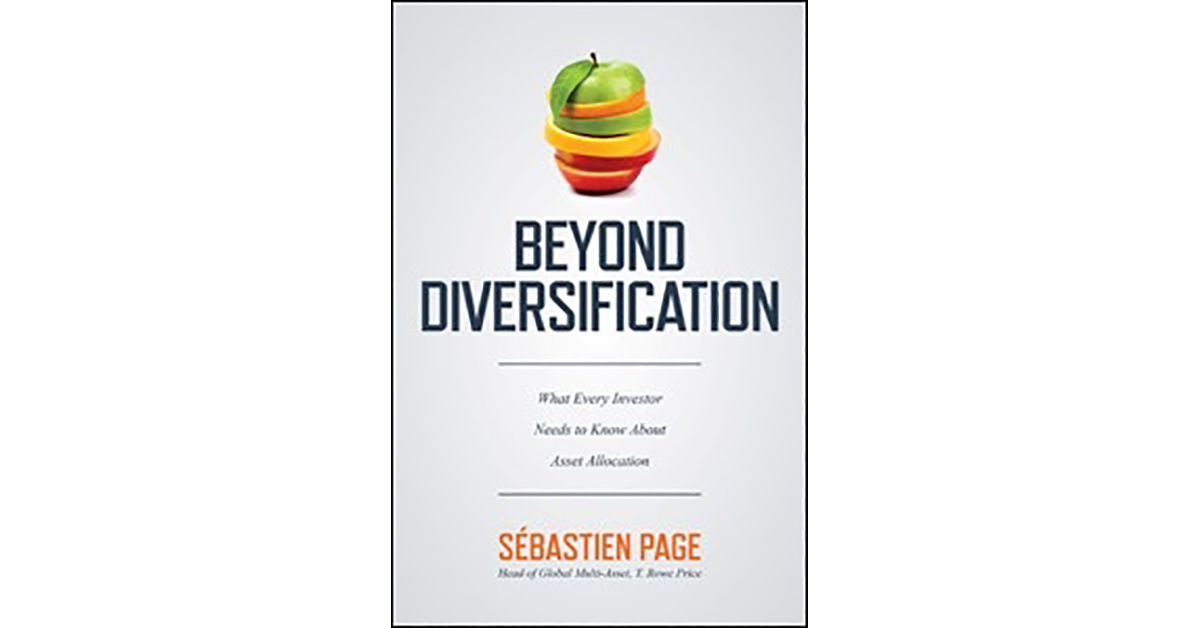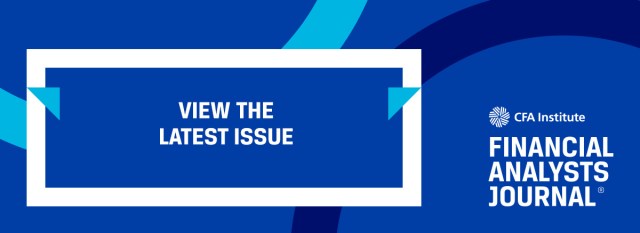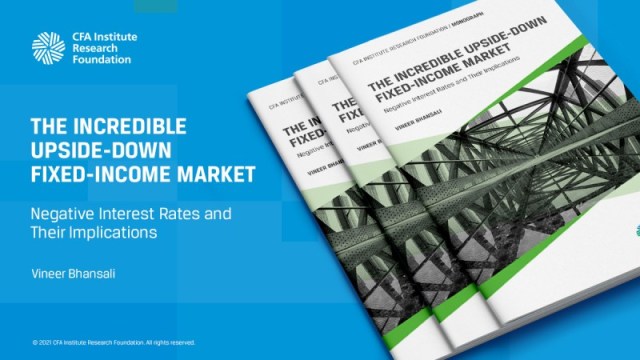[ad_1]
Beyond Diversification: What Every Investor Needs to Know about Asset Allocation. 2020. Sébastien Page, CFA. McGraw Hill.
Sébastien Page, CFA, explains the pros and cons of different approaches to forecasting returns, risks, and correlations across asset classes. He explores methods of constructing portfolios to meet a range of client requirements.
“If you don’t think you can estimate expected returns, you shouldn’t be in the investment business.” — Bernd Scherer, PhD
Buried within every multi-asset portfolio — whether explicit or implicit — are forecasts for asset returns, risks, and correlations. In this book, Sébastien Page, CFA, sets out the pros and cons of different approaches to forecasting. He provides advice on portfolio construction and offers sample portfolios that put theory into practice. Page has authored academic papers on many of these issues. In this book, he skips past the math and dives in with practical conclusions.
The capital asset pricing model (CAPM) has flaws but offers
a useful starting point for forecasting returns. “It links expected returns to
an objective measure of risk and current interest rate levels,” according to
Page.
In theory, the market portfolio at the heart of CAPM
calculations encompasses all assets, public and private. In practice, listed
equities and bonds provide an appropriate proxy for most investors. The global
market was made up of around 60% equities and 40% bonds in 2000. Today, it’s
closer to 40% equities and 60% bonds, owing to share buybacks, privatizations,
fewer IPOs, and large issuance of government bonds. Investors can calculate
expected returns for the wide range of assets included in multi-asset
portfolios by combining the weighted estimates for equities and bonds and then
multiplying by the beta of each asset.
A simple inversion of the price-to-earnings ratio (P/E) of an equity market gives a reasonable back-of-the-envelope estimate for equity returns. Which P/E? The Shiller CAPE (cyclically adjusted P/E) provides a cyclically adjusted measure for the United States. The low return implied by today’s high level may be too pessimistic if the rise in profitability over the last decade can be sustained. Higher earnings may be persistent due to the quasi-monopoly nature of big tech companies. Furthermore, recent earnings may be understated due to accounting issues. In contrast, measures simply based on today’s earnings may be too optimistic. The author finds that combining the historical and current earnings approaches leads to forecasts close to the estimates of a range of industry peers.
Forecasting returns for local-currency government bonds is
straightforward and relatively reliable. The current yield to maturity provides
a good estimate of long-term returns. Yield shocks may push bond prices lower
(or higher) but will be compensated for by higher (or lower) reinvestment rates
going forward.
The CAPM is a valuation-agnostic model. Equity valuations,
however, exhibit a powerful mean reversion effect over the long term.
Therefore, investors can improve their estimates by incorporating forecasts for
valuations. Equity returns can be decomposed into three components, with income
and growth standing alongside valuation change. Dividend payouts are
persistent, so income forecasts based on current yields are reliable. Earnings
growth should be anchored to economic growth, given that profits as a share of
economic output must mean revert over the very long run.
Page explores a variety of methods for fine-tuning
forecasts, including analysis of institutional investor flows and momentum
across asset classes. The sheer volume of macro data makes it difficult to
separate signal from noise. Color-coded dashboards are a good way to present
data on relationships where macro factors matter for asset prices.
A review of 93 academic studies by Ser-Huang Poon and Clive Granger found that “there’s no clear winner of the great risk forecasting horse race.” Investment risks are complex. Adding complexity to risk models, however, does not necessarily improve predictability. What, then, should investors do? Page suggests using a number of different models—and applying judgment.
The simplest approach is to assume that next month’s
volatility for each asset class will be the same as the last month’s. This
approach is also hard to beat; volatility is persistent from month to month.
The opposite, however, is true over the long term. Five years of calm markets
are more likely to be followed by five years of turbulence, and vice versa.
Models based on normal distributions underestimate the
likelihood and magnitude of downside risks. Page has found no persistent
patterns, however, that would help us forecast skew and kurtosis, the
statistical measures of these extremes. Instead, he suggests different
approaches to modeling tail risks.
Modeling risk-on and risk-off environments separately can provide a more realistic view of potential downside risk by incorporating stressed betas and correlations. Scenario analysis — using both historical events and forward-looking scenarios — can add another layer of understanding. Investors need to consider, though, how markets have changed since those historical events. For example, emerging markets today are less sensitive to commodity price changes than in 2008, while bonds, as measured by the Barclays Aggregate Index, are more sensitive to interest rate changes because the average duration has increased (from 4.5 years in 2005 to six years in 2019).
Once investors have forecasts for returns, risks, and
correlations, they can input them in an optimizer to calculate the recommended
asset mix. Most optimizers suggest concentrated portfolios and are sensitive to
small changes in inputs. Investors can use five methods to overcome these
limitations:
- Constrain weights to individual asset classes.
- Apply group constraints, such as exposure to alternative assets. (This is not a random choice. Many forecasts for alternative assets overestimate expected returns and underestimate risk, leading to recommendations of large exposures.)
- Use resampling methods, developed by Richard Michaud, which incorporate the uncertainty of forecasts.
- Adopt the Black–Litterman approach, which blends active investors’ forecasts with forecasts derived from the CAPM, adjusting for the confidence in those forecasts.
- Optimize on three dimensions: risk, return, and tracking error to peer group weightings.
The stock–bond mix is the biggest decision that multi-asset investors make, but this mix does not reliably reduce risk. The diversification benefits of government bonds are often seen during stock selloffs, but stocks have not protected investors against bond selloffs. Stock–bond correlations were positive in the 1970s and 1980s, when inflation and interest rates drove volatility. This was also true in the “temper tantrum” of 2013, when the US Federal Reserve signaled that monetary policy would tighten, and in 2018, when policy rates rose.
Pension investors are more likely to match their retirement goals with bonds, especially inflation-linked bonds. Most investors, though, have not saved enough for retirement. They are more likely to reach their retirement goals with equities.
Are carbon-based energy companies a necessary hedge against
inflation or future stranded assets? How do social and governance issues affect
the sustainability of government debt in emerging markets? Asset allocators have
vital decisions to make on these issues, yet surprisingly, the book does not
address environmental, social, and governance analysis.
There is no one right approach to asset allocation. Page quotes his father, a now-retired finance professor: “We don’t know the outcomes in advance. The information we use is always incomplete and we can’t control the variables. Still, we must make decisions because, often, the absence of a decision is worse.” Investors will need to use their judgment in selecting the right tools for the job. The range of tools that Page sets out in this book can help investors make better decisions.
If you liked this post, don’t forget to subscribe to the Enterprising Investor.
All posts are the opinion of the author. As such, they should not be construed as investment advice, nor do the opinions expressed necessarily reflect the views of CFA Institute or the author’s employer.
Image credit: ©Getty Images / Ioannis Tsotras
Professional Learning for CFA Institute Members
CFA Institute members are empowered to self-determine and self-report professional learning (PL) credits earned, including content on Enterprising Investor. Members can record credits easily using their online PL tracker.
[ad_2]
Image and article originally from blogs.cfainstitute.org. Read the original article here.





